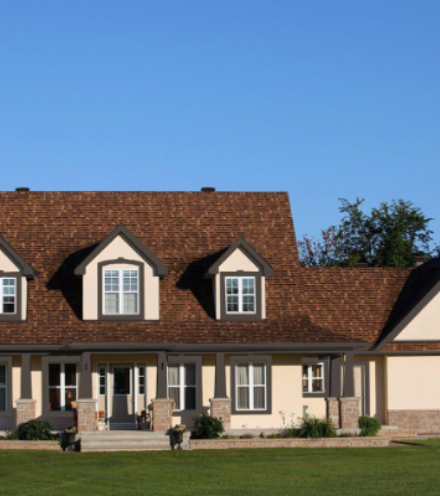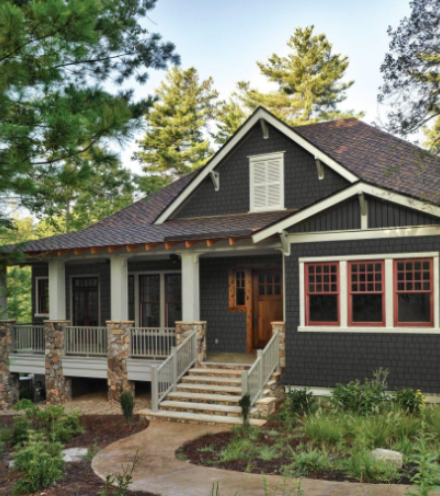As fiber cement siding becomes more popular, and more homeowners are discovering its value for protecting and beautifying their homes, the need for better trained and equipped installers is growing. more siding installers need to learn how to properly install it than ever before. In many ways, installing fiber cement siding is similar to installing wood siding, but there are some differences that need to be addressed in order for it to be installed properly.
As seen in this video, there are very precise steps you need to take to install the siding properly. However, the learning curve is easy, and you’ll find that with practice you can install fiber cement as quickly and easily as other materials you’ve worked with previously.
Cutting the Fiber Cement
Whenever possible, cut the fiber cement boards upside down to get the cleanest lines. As with all sidings that produce dust, best practices include dust masks and tools which minimize the amount of dust produced when cutting the siding. There are even tools which allow for a dust-free installation.
Prime and Paint
Fiber cement boards can be purchased ready to install in a wide range of beautiful colors and stains. Or you can prime and paint them on site. Whichever method you use, you will need to coat with latex paint all cut ends of the siding before installing the siding. Typically, this is done at the saw by the person cutting the siding. It can be immediately installed.
Installing the Siding
Like most siding, you will install the fiber cement boards from the bottom up when using a traditional, horizontal lap application. You will begin with a starter strip with weep holes that will allow moisture to readily escape. You will need a clearance from grade that either follows installation instructions or local building codes (whichever is greater). Then you would install your fiber cement corner and window trim.
Position your first course of siding ¼-inch below the starter strip and nail the siding into the studs 1-inch down from the top of the siding. Use galvanized siding nails and make sure that the nails penetrate a minimum of 1-1/4-inches into the framing. Do not overdrive the nails. Keep the nails flush to the siding. And it is recommended to put a flashing strip behind each butt joint to allow for water runoff.
Continue installing each course, making sure to leave a gap that the manufacturer requires at all trim locations, such as around windows and doors and at the edges of the installation to receive caulk. Except for larger widths, fiber cement siding is blind nailed, that is, the one nail that holds the siding is hidden behind the next row of lap siding.
As with any other siding installations, it is important to flash above all horizontal terminations, such as above windows, doors, and other protrusions in the siding. Make sure to leave an inch gap between the siding and the flashing at all flashing locations, such as each horizontal termination. When the siding is completely installed, you will caulk the vertical gaps between your siding and trim.
Fiber cement siding can be installed over foam insulation, up to 1-inch as long as it conforms to regulations and standards.
Become a Better Installer
Make sure you keep the siding stored flat and covered when not currently in use, and that you pay attention to the installation manual. Fiber cement siding may be a different material than wood or vinyl, but a good installation is not difficult nor time-consuming.
Follow these steps and review the video above to ensure that you know the correct procedure for installing fiber cement siding. With a little attention to detail, you’ll make sure that your fiber cement siding will last for decades to come. Install fiber cement siding today, to start siding better homes.




